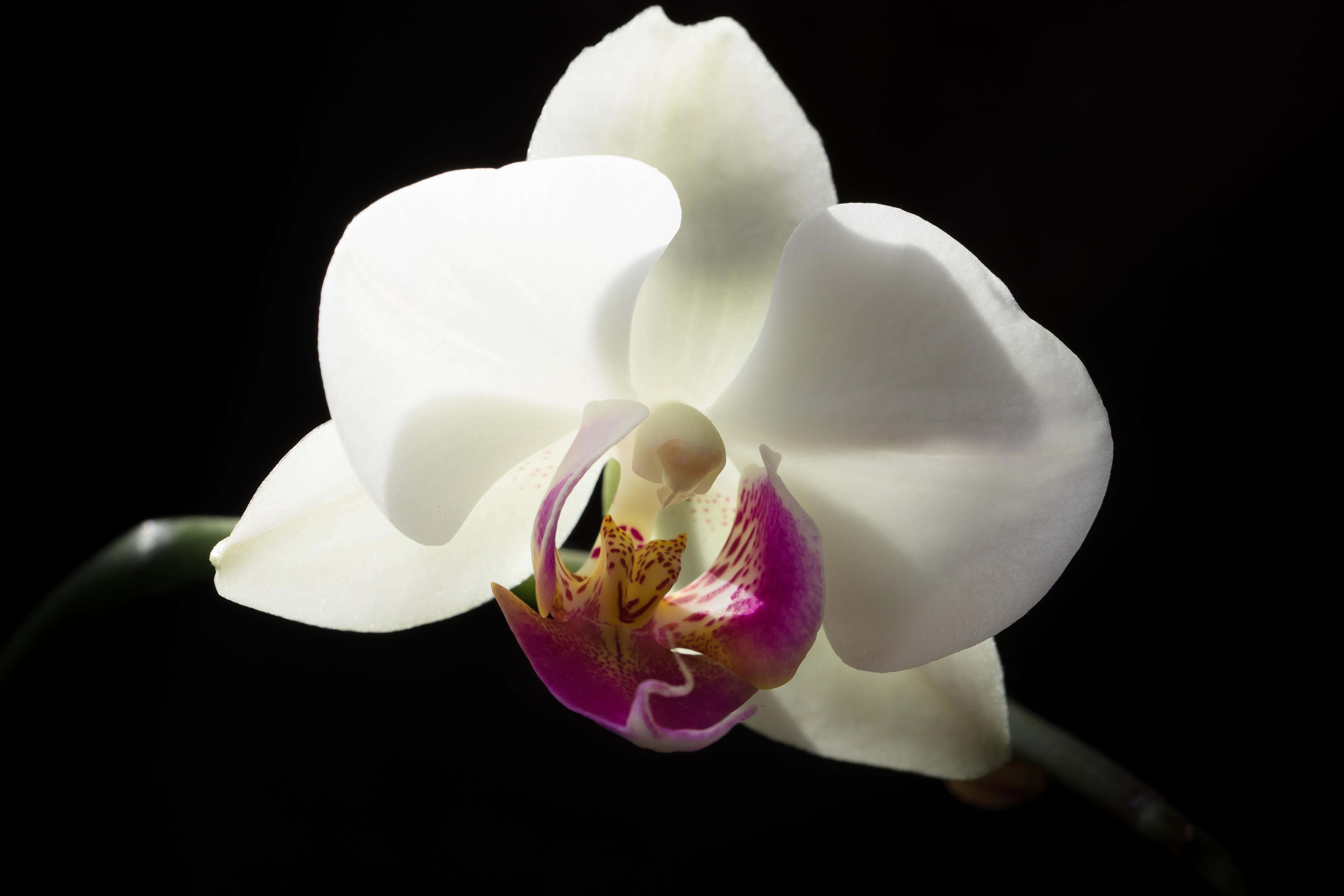What is wrong with my orchid?
A Kew botanical expert offers advice.

Is that elegant orchid you bought recently looking tired?
It may be that the flowers have dried up and dropped off, or the previously rich green leaves have turned yellow, while aerial roots are cascading over the top of the pot. So, what are you doing wrong?
It could be a number of things, from temperature and light, to overwatering and lack of feeding, says Alberto Trinco, botanical horticulturist at Kew Gardens (kew.org) – which is about to stage its orchid festival, focusing on the beauty and biodiversity of Cameroon, the first time the festival will celebrate an African nation.
Trinco offers the following things to look out for:
Scorch marks on the leaves
This is a sure sign that the plant is sitting in direct sunlight – find a new location! The damaged leaf will be replaced with a new one in due course.
Brown or yellow stems
It’s normal for these to occur after flowering and once the plant enters a period of dormancy. You can cut back the stem above a node, which could lead to more flowers, or trim the stem back to the base, which will allow the orchid to conserve energy for new growth.
Losing leaves
A few leaves dropping, especially old ones, is quite common, but if you’re losing a lot then it could be that there is a problem. Check the media in the pot and the state of the roots, and consider repotting if they do not look good. Cold temperatures could also be the cause, so check for draughts and change location if needed.
Falling flowers
When the plant has been in bloom for a while, it is common for flowers to fall (the old ones are usually the first to go). If this is not the case, it could be related to stress, perhaps due to a cold spell, the plant being left too dry for too long, or loss of roots due to overwatering.
Watering issues
Orchids do not like being overwatered. Sitting in water for too long can lead to decaying roots, which is bad for the plant and could kill it. Water orchids by submerging the pot, leaving the plant to soak for a few minutes before draining it completely.
Orchids don’t like tap water, which can be hard. Rainwater is best, but distilled water with added fertiliser is a good solution, as the excess purity of distilled water can take the nutrients out of the plant.
Spraying or misting the plants does not increase humidity enough in the long-run, and may cause rot or diseases if there is not enough ventilation.
Water requirements change with the seasons, and in relation to the type of media your plant is in, so check it regularly to give it the best care. Many orchids are now grown in a mix of coconut fibre that retains moisture for longer.
Temperature
“Orchids available at garden centres are usually happy with the average temperatures at home, but it’s important to make sure they are kept away from both cold drafts and direct heating sources,” Trinco says.
Keep them in a room that maintains a consistent temperature. It’s a myth that all orchids like hot temperatures. Although most of them are tropical, many can live happily at room temperature (15-20°C).
Light
Orchids love light, but they can’t tolerate direct sunlight, as they can get sunburnt. A north-facing windowsill is ideal, if that’s not possible, any area in indirect sunlight will usually be fine. If the location is more exposed, use something to filter the direct light coming in, such as a curtain.
Food
Slow growth is SOS for more food, orchids are happy when they are regularly fed. Treat them every other week with a specific orchid fertiliser or a flowering-plant fertiliser, halving its recommended amount.
Check the roots
If they are silvery-grey or white, it means the plant needs a drink. If the roots look green, there is still moisture in the pot. If they are brown and soggy, your plant has likely been overwatered, and roots may have rotted. If you can’t see the roots, check the soil in your plant pot. If it’s dry, water it. Alternatively, feel the weight of the pot – if it’s very light, it is probably dry all the way through.
Repotting
Most common orchids are epiphytes, meaning that in nature they grow on trees rather than in soil, so don’t worry if you see aerial roots on top of the pot. These are totally normal.
When the time comes to repot your plant, ready-to-use orchid mixes are available, but you can also use bark chips mixed with pumice and charcoal (at the ratio of 2:1:1).
Repotting orchids is essential to refresh old media, which after a while starts decaying, and to stop the roots from becoming too crowded. It is usually done every year or two. Do it once the orchid has finished flowering, snipping off any dead or decaying roots as you go.
Kew’s Orchid Festival takes place from Saturday February 4 to Sunday March 5. For more information visit kew.org.
Bookmark popover
Removed from bookmarks